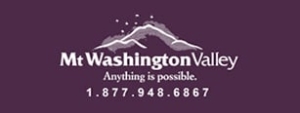Fish And Game Using Choppers To Collar Moose In The North Country
CONCORD, NH — Northern New Hampshire residents may see a helicopter overhead in the coming weeks as approximately 45 moose cows and calves are collared for the fourth year of a study of moose mortality and productivity.
The New Hampshire Fish and Game Department has contracted with Native Range, Inc., to collar the moose. Activity will be weather dependent, but could begin as early as January 9, 2018. During this time, residents of Success, Berlin, Milan, Cambridge, Dummer, Millsfield, Second College Grant, Wentworth’s Location, and Errol may notice a low-flying helicopter. Residents with questions can call Fish and Game’s Wildlife Division at (603) 271-2461.
The collaring will take place in Wildlife Management Unit C2, the eastern side of WMUs B and C1, and southern A2.
The capture crew will use net-guns and tranquilizer darts to capture the moose so that they can be collared. Blood and other samples collected during the collaring process will help evaluate the health of the moose. The collared animals will be radio-tracked for four years and monitored for as long as the collars keep transmitting. A graduate student and several field technicians from the University of New Hampshire (UNH), which is partnering with Fish and Game in the study, will track the moose, recording how long the individual moose live, and when a moose dies, getting there as soon as possible to determine the cause of death.
Fish and Game’s moose project leader Kristine Rines indicates that the capture crew will be collaring moose in Maine, New Hampshire, and Vermont, as the three states work together to learn how moose density and weather interact to boost tick-caused moose mortality and reduce moose birth rates.
“In comparing mortality and productivity from the New Hampshire study conducted in 2001-2006, versus the work done to date in New Hampshire from 2014-2016, we know that ticks are causing increasingly negative impacts to adult cow productivity,” said Rines. “In addition, as our winters become consistently shorter, more ticks are surviving and calf mortality is remaining high. We are also seeing clear evidence that tick loads are directly correlated with both moose density and shorter winters. We did have a break last year (2017) as the summer-fall drought caused many ticks to die, lessening the impacts to moose.”
The study, funded by federal Wildlife Restoration dollars with the support of matching funds from UNH, may help answer a question on the mind of many Granite State residents and visitors: What’s in store for New Hampshire moose?
“While regional moose populations are indeed facing some serious threats, moose are not on the verge of disappearing from the New Hampshire landscape, but they are declining,” said Rines. “We don’t know what the future holds, but as our winters continue to shorten, it may be best for moose if they are held at much lower densities. Based on our own work, we know that ticks have far less impact when moose densities are 0.25/square mile or less.” Current moose densities in the New Hampshire study area range from 1.14-1.71 moose/square mile.
For more information on the study, visit www.wildnh.com/wildlife/moose-study.html.
Story Contributed by New Hampshire Fish and Game Department


